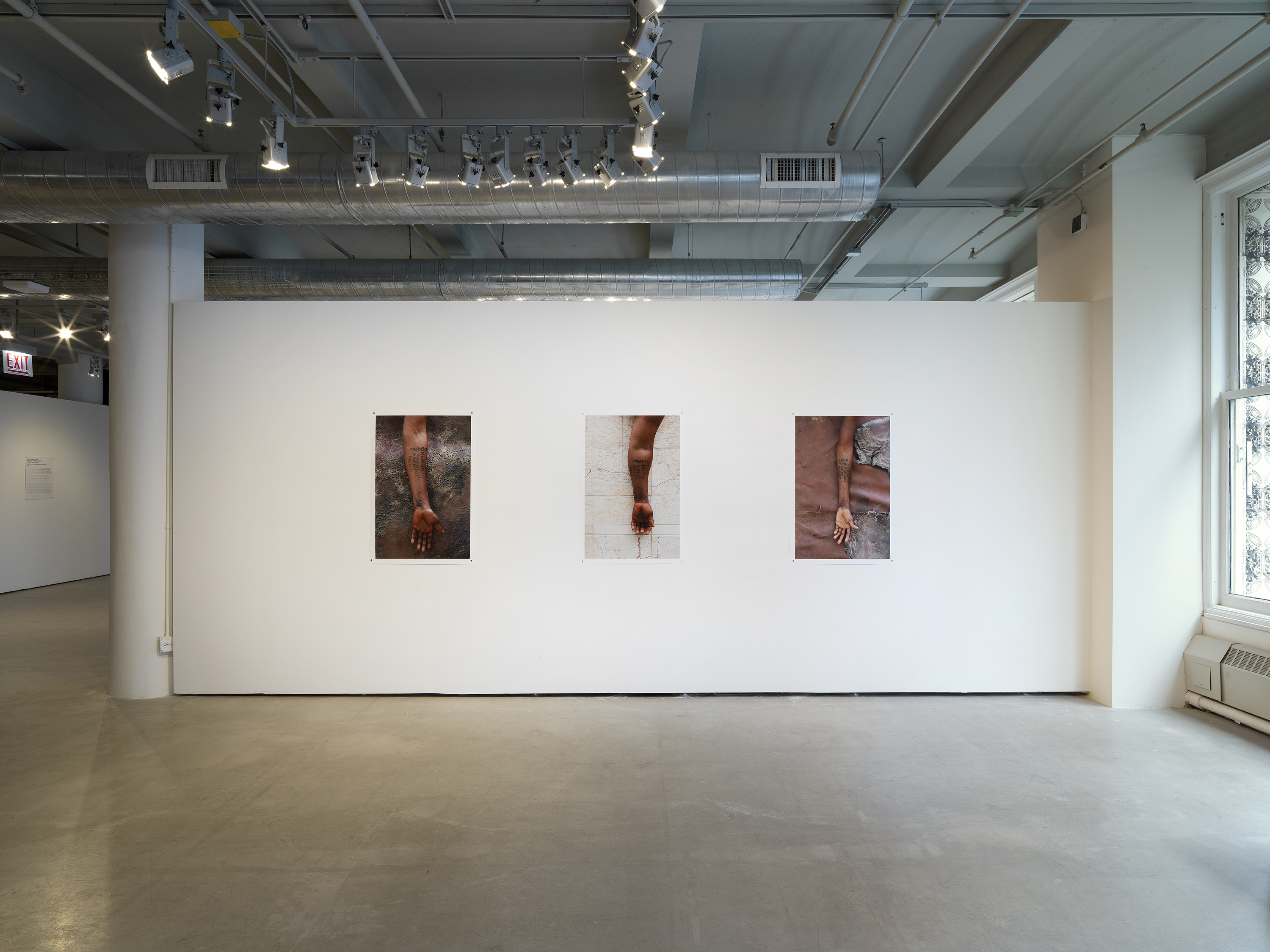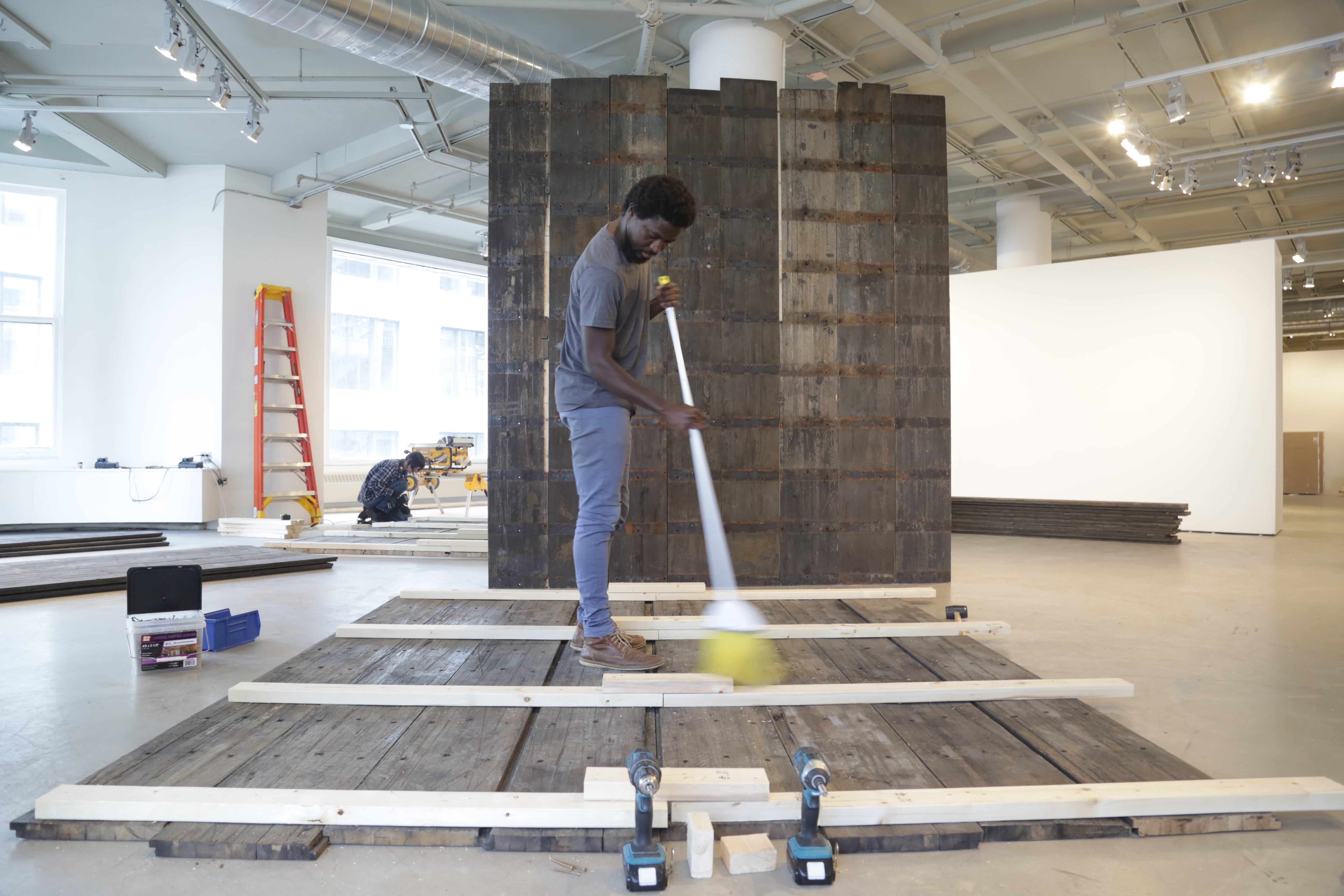
library of kąrî’kạchä seid’ou
This work is dedicated to kąrî’kạchä seid’ou who’s emancipatory art teaching at K.N.U.S.T Kumasi has produced a generation of artists who have been interested in using the residues of history and time as a medium of reflective production. Over the years seid’ou has been preoccupied with questions regarding the form of art and its relationship with the real world stretching outside the boundaries of the known universe. What can art be rather than what is it? How can contradictions lead us to new ways of thinking? What does land and responsibility have in common, or does one follow the other? How do we read life beyond the anthropomorphic but at the same time acknowledge the presence of the body and all the conditions that come with it?
The library of kąrî’kạchä seid’ou is a composition of wood panels from shipping containers acquired in the city of Chicago. These individual panels have been stained over the years by the residues of goods transported within the shipping containers they once occupied. When assembled the visible horizontal lines, which cut across the panels, create a painterly effect. This effect is an important way to read the invisible but yet visible exploitative labor forms that have contributed to the sustenance of lives across the world. It houses a library of reading materials, from communist manifestos to Quantum theory. These materials remind us of the relationship between the living and dead with their connection to the boundaries outside of earth’s gravity into the cosmos. With the current state of climate conditions and immigration laws, maybe we can learn from the “dead or ghosts”, whether they are material or immaterial. I believe they can lead us to ask significant questions about existing relations and the fabrication of new futures based on equal freedoms.
ABRASIPU BINTU FATI. 2019
LETIFA SOH. 2019
ABULAI SEIDU GRC. 2019
ARUNA – KPATASCO. 2019
FATI KONONGO. 2019
BINTU OBUASI S.E. 2019
Historically people have migrated from the northern parts of Ghana to the south for economic opportunity. In the process they tattoo their arms, primarily with biodata of their family or towns from where they came, so if they die in transit their bodies can be identified, traced, and sent back to their families. This simple gesture leaves a political stain on the body. These arms, superimposed onto old colonial maps and leather from old coaches used in post independence Ghana, establish relationships between the material and political conditions of the body and these objects—reflecting our collective human/non-human histories.

Ibrahim Mahama (b.1987) in Tamale Ghana is an artist who lives and works in Accra, Kumasi and Tamale, Ghana. He started his practice through his interest in the history of materials and architecture. Failure and delay through specific forms always inform his choice of sites which he believes the works do not only occupy but are also occupied within the works/objects. Residues and points of chaos registered as marks within the forms he selects, they present us alternative perspectives of looking into the materials/Labour conditions of society. Form is important. His work has included objects from jute sacks used to transport commodities to the point of decay and later sewn together with a network of collaborators under specific Labour conditions which is then superimposed on architecture. The politics of the hand and it’s parallel relation with architectural forms become a lot more evident. His work, a straight line through the carcass of history has also dealt with forms related to the second world war and bacteria life. His work has been included in the 56, 57 and 58 Venice Biennale, documenta 14 Athens and Kassel, Orderly Disorderly, Accra, Images An Age of Our Own Making, Denmark, the island is what the sea surrounds, Valletta 18, Malta and Spectacles Spectations, Kumasi Ghana and Labour of Many at the Norval Foundation, Cape Town and currently Parliament of Ghosts at the Whitworth Art Gallery in Manchester. He finished a year residency with the DAAD in Berlin in 2018. In march this year he opened SCCA Tamale, which is an artist run space, built and dedicated to retrospectives of practices which emerged from the 20thcentury. His current interests are using specific architectural forms within history in the formation of spaces inspired by the potentialities and failures of modernity.
